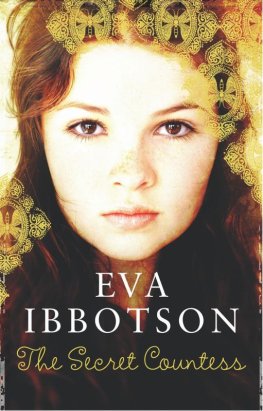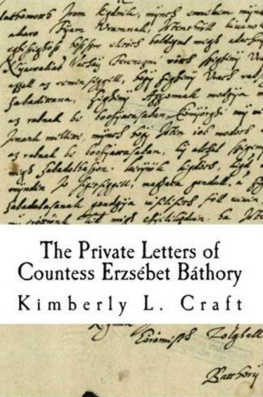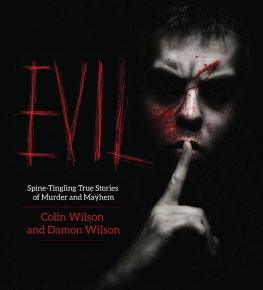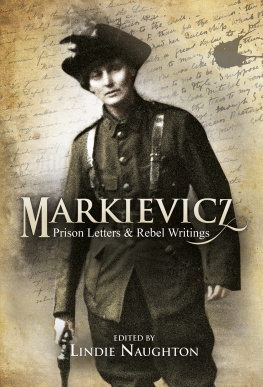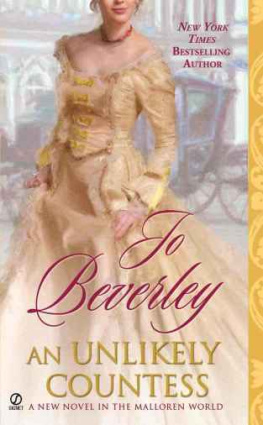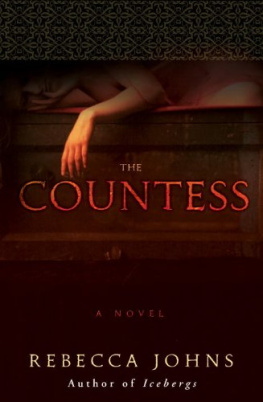INFAMOUS LADY:
THE TRUE STORY OF
COUNTESS ERZSBET BTHORY
Kimberly L. Craft
Infamous Lady:
The True Story of Countess Erzsbet Bthory
First Edition
2009 by Kimberly L. Craft. All rights reserved. No part of this publication may be reproduced, stored in a retrieved system, or transmitted, in any form or by any means, electronic, mechanical, photocopying, recording, or otherwise, without prior written permission of the publisher. Printed in the United States of America.
For the girls.
PREFACE
Worlds Worst Female Serial Killer. Over 650 servant girls murdered. Vampire drinks and bathes in the blood of her victims. Witch, lesbian, and sadist. Walled up alive in castle tower.
Had she lived today, the mediaincluding the tabloidswould most certainly offer headlines like this about a most unusual Hungarian countess who lived four hundred years ago. Years ago, I happened to overhear a conversation. A young lady made a remark in passing to her friend about this particular woman, Countess Erzsbet (Elizabeth) Bthory of Hungary. The friend had never heard the name before, and that caused the first young lady to explain: Shes the worlds worst serial killer.
The worlds worst serial killer? Names like Bundy, Dahmer, Manson and Gacy immediately come to mind, but Bthory?
She killed over 600 people, the first woman continued. She bathed in the blood of her victims and was finally walled up in her castle.
The friend remembered the story now, perhaps from an old horror movie. Yes, but was it true? she asked.
Yes, she was a real person, and shes in the Guinness Book of World Records.
Intrigued, I myself wondered why someone who had killed over 600 peoplesomeone listed in, of all things, the Guinness Book (albeit as the worlds worst female serial killer)was not a household word, particularly given the publics fascination with true crime stories.
Some preliminary research quickly demonstrated that facts could not easily be separated from fantasy. Unlike other documented accounts of criminal personalities, the elaborate tales and legends woven around this particular figure had turned her into something of a caricature or cartoon character. On the one hand, she was a member of Hungarys ruling elite, the wife of a national war hero, and descended from an old and illustrious noble family. On the other hand, she was a lesbian vampire witch who bathed in the blood of 600 victims whom she had tortured to death before writing about each in her diary. She attempted to preserve her youth and beauty through sorcery and murder, and the story of her final punishmentbeing walled up alive within a towerprompted both books and horror movies, all retelling the ghastly story. It is said that Countess Bthory inspired both the Brothers Grimm as well as Bram Stoker; even a metal band by the same name found its inspiration in her. Yet, it didnt make sense. The vampire stories could be brushed aside as superstition but, logistically, how would a member of the aristocracy, someone who managed vast estates, even have time to kill so many people? How could someone who attended the emperors court maintain her position in polite society if so much killing was going on? Where would she even stash so many bodies? And why were so many of her victims young girls?
The more I researched the subject, the more I discovered how strange this story really was. Countess Bthory was truly an enigma: uncovering, or recovering, her story became something of an obsession. I was particularly interested in the legal aspect. Her accomplices were tried and convicted while she, herself, was never triedyet still convicted. Over 300 witnesses testified, but only a handful claimed to have actually seen her do anything wrong. As for the body count, those with knowledge testified to perhaps 50 dead over a period of decades; one or two thought the count was possibly as high as 200. In fact, the allegation of 650 victims came only from a single sourcean unknown servant girl, still in childhood, who based her entire claim on hearsay.
There was, indeed, apparently much more to this story, all of it buried under the rubble of history: ruthless politics, relentless religious wars, blood-feuds with Ottoman Turks, and the crumbling vestiges of feudal society struggling to retain its power. In the end, I discovered, as always, that truth was indeed more interesting than fiction.
That said, many decisions had to be made during the preparation of this work. Proper names, for example, posed a particular problem: should they be spelled in the original language or in English? Should variant spellings be given? Four hundred years ago, few people were literate, and recordkeeping was not an exact science. In official court documents and letters, the same persons name could be spelled two or three different ways and, in some cases, even phoenetically by the scribe. As far as possible, I decided to use formal spellings, in the original languages, for proper names; however, for the readers convenience, I have also included all of the variant spellings whenever possible.
As for original source material, the question arose whether to use standard translations or render the material using new, literal translations. To this end, I decided to utilize literal translations. They are more accurate and, in many ways, more revealing than some of the former, romanticized versions.
Researching this project posed a particular challenge. Of all the material written about the Countess, much of it is fictional, speculative, or inaccurate. My challenge was to find as much original source material as possible. That said, the material would then have to be translated from Hungarian, Slovak, Latin, or German and finally reconstructed into a (hopefully) more accurate portrait of this woman and the events surrounding her life. Unfortunately, little information is available today. While other noble families of the time maintained and, to this day, still have historical archives in their names, none exists for Countess Bthory. As for the actual trial transcripts, various versions were already in existence at the time when they were originally written, some even with marked differences.
We know without doubt that Erzsbet existed, but we cannot find the site of her burial todaycrypts allegedly housing her remains have supposedly been found empty. Thus, researching this work became quite the treasure hunt. The mystery of the Countess grew deeper and deeper, and finding the elusive fragment of a letter, document, or some other original source was very much like striking gold. For the interested reader and fan of this subject material, however, I am sure you will experience the same excitement that I did upon discovering what I promise will be fresh and new material on the Countess. In many cases, the information presented here is being published for the very first time in English: well over a year was spent researching and translating original source material.
Finally, in an effort to keep the content interesting yet reliable, I have written some of the material in the form of literary vignettessnippets of detail that read in story formusing as much original dialogue as possible. The dialogue and scenes have been recreated from trial transcripts and witness depositions. Some artistic liberty has been taken since we do not know every detail, but the reader can be assured that there is more fact than fiction.
In the end, I have attempted to put together the best documentary possible on the Countess. I apologize to the reader in advance, however, since it is not, and never will be, perfect. In addition, the work will never truly be finished, since it will continue to evolve over the years as more information comes to light. It is, however, an honest effort to provide new information on the riddle of Erzsbet Bthory, her alleged activities, and the various conspiracies surrounding her personally. In some ways, she herself was a victim, and that, more than anything else, may be the most interesting facet of the so-called Blood Countess.
Next page

